Nasturtium flowers are more than just bright and attractive blooms; they carry deep spiritual meanings that have been recognized across different cultures. Their symbolism ranges from courage and victory to creativity and hidden love. These flowers represent strength, resilience, and positive energy, making them significant in both personal growth and cultural rituals.
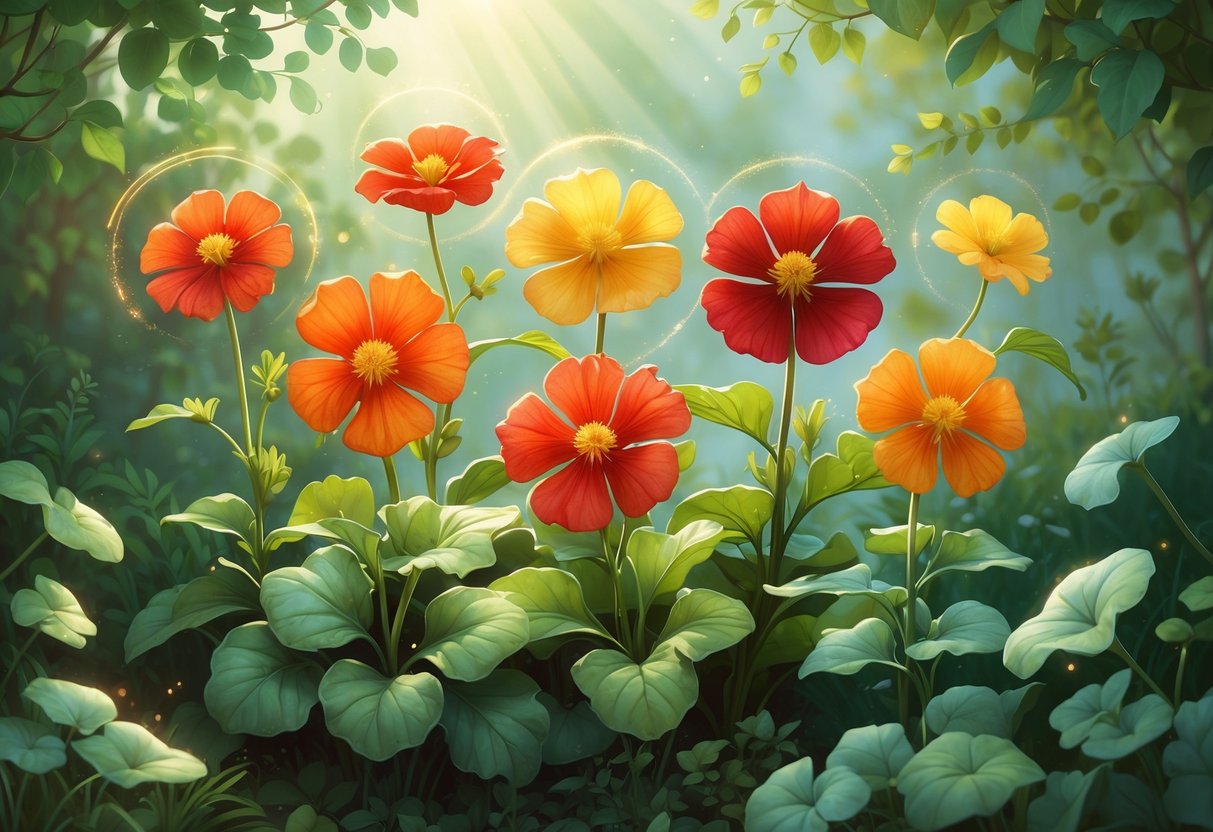
Known for thriving in tough conditions, nasturtiums inspire bravery and perseverance. Their vivid colors also add layers of meaning, with each shade reflecting unique aspects of life and emotion. Whether seen in gardens, art, or tattoos, nasturtiums serve as a powerful symbol for those seeking to express boldness and spiritual triumph.
Understanding the spiritual meanings attached to nasturtium flowers can enrich one’s appreciation of their beauty and symbolism. This article explores seven key spiritual meanings tied to these vibrant flowers and how they can inspire courage, creativity, and connection.
Key Takeways
- Nasturtium flowers symbolize strength and resilience.
- Their colors carry specific spiritual messages.
- They hold cultural and personal significance in many traditions.
Overview of Nasturtium Flowers
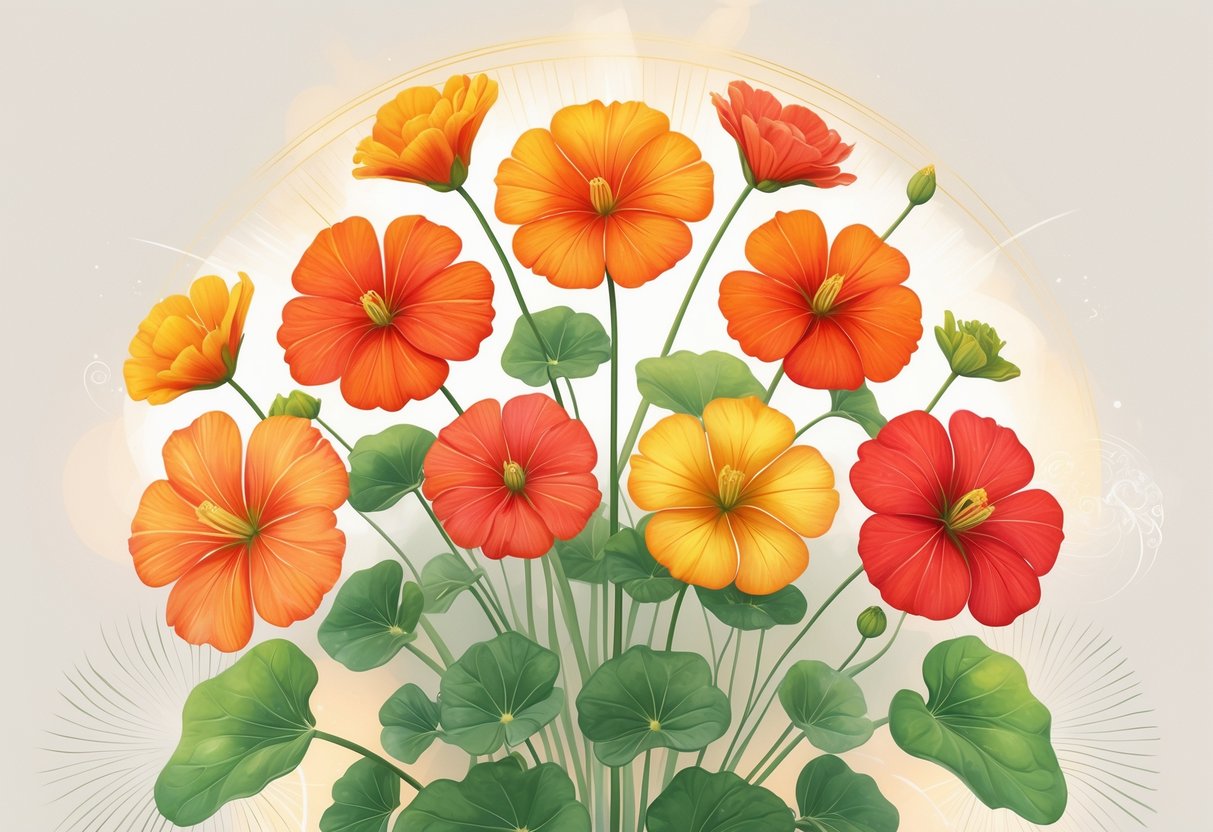
Nasturtium flowers are known for their bright colors, edible qualities, and cultural importance. They come in many varieties and have a rich history rooted in South America. Their unique features make them popular in gardens and cooking, while their symbolism reflects strength and creativity.
Botanical Background and Origin
Nasturtiums belong to the genus Tropaeolum, mainly native to South and Central America. The common nasturtium, Tropaeolum majus, is the most widely grown species. These plants thrive in a range of climates and soils but prefer sunny, well-drained areas.
They are annual or perennial vines and shrubs with round leaves and trumpet-shaped flowers. The flowers produce seeds, are edible, and have a peppery taste similar to watercress. Nasturtiums have a fast growth rate and often trail or climb, making them useful as ornamental ground cover or for vertical gardening.
Distinctive Features and Varieties
Nasturtiums stand out with their bright flowers in shades of red, orange, yellow, and sometimes white. Their large, round leaves have a shield-like shape, providing unique texture and contrast in gardens.
Varieties include trailing types and upright forms. Some grow as compact bushes, while others climb using twining stems. The flowers’ colors are not only decorative but also hold symbolic meanings tied to emotions like passion (red), creativity (orange), and joy (yellow).
Beyond appearance, nasturtiums are valued for attracting pollinators such as bees and butterflies. They also act as companion plants to protect vegetables by repelling certain pests.
Historical and Cultural Significance
Nasturtiums have a long history among indigenous peoples in South America. The Incas and Aztecs used them in art, textiles, and healing rituals, linking the flower to bravery and protection.
Their bold colors symbolized victory and strength in battle. Nasturtiums were also used as natural medicine for infections and to boost immunity.
Today, different cultures still respect nasturtiums for their symbolic meanings. They appear in festivals and ceremonies related to protection, creativity, and emotional expression. Their practical uses in cooking and gardening keep their heritage alive worldwide.
Symbolism and Language of Flowers
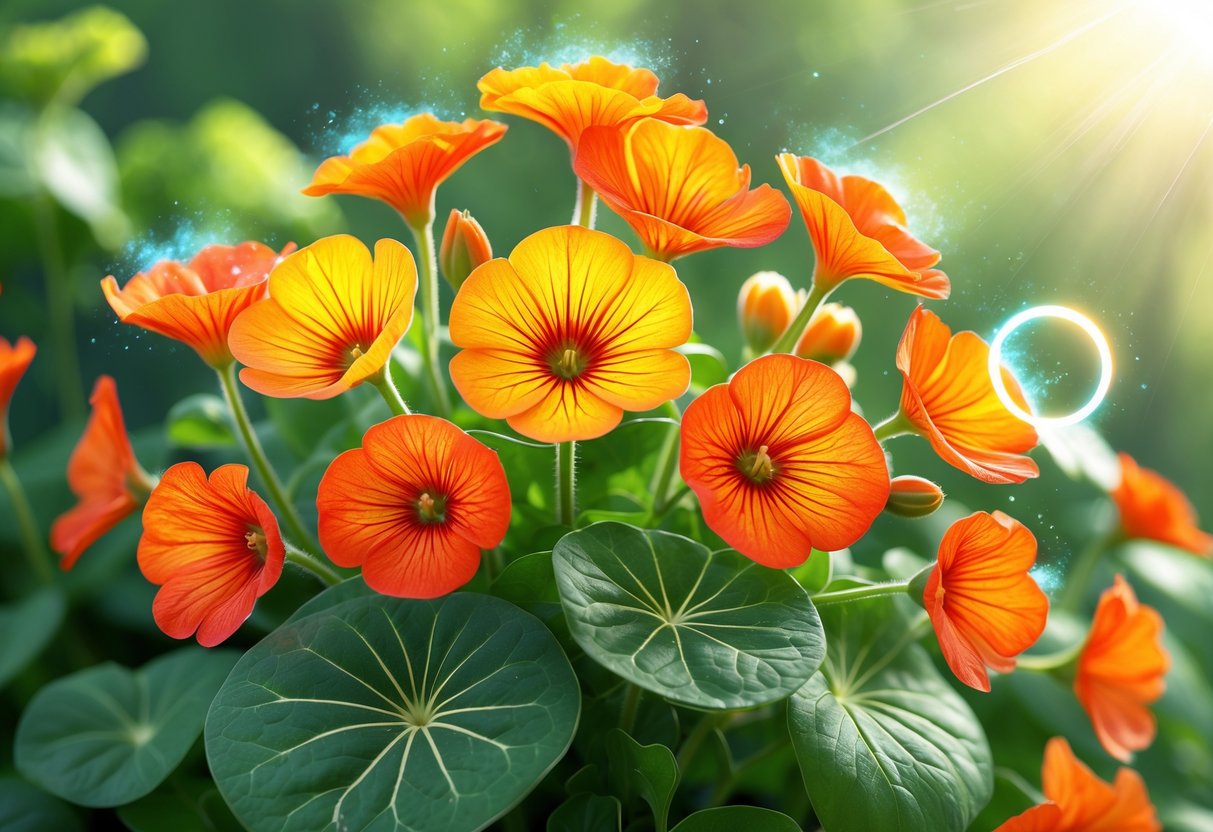
Nasturtium flowers carry clear and specific meanings expressed through the language of flowers. Their strong colors and shapes communicate ideas about strength, personal achievement, and emotional qualities. These meanings have been recognized in different cultures and contexts.
Victory, Triumph, and Conquest
Nasturtiums symbolize victory and triumph, often linked to overcoming obstacles. Their fiery red and orange tones remind people of bold success and achievement. Historically, these colors were associated with battle and conquest, making the flower a sign of personal or collective wins.
The petals’ bright, flame-like appearance strengthens this idea of triumph. Giving or displaying nasturtiums can celebrate progress, resilience, and reaching important goals. This flower encourages recognizing effort and success, acting as a visual reminder of perseverance paying off.
Courage and Boldness
Nasturtiums express courage through their vibrant colors and confident growth in tough conditions. The flower’s striking appearance stands out, symbolizing boldness and the willingness to face challenges head-on.
Their peppery taste also adds to this symbolism, suggesting spiciness and energy. Nasturtiums inspire self-trust and bravery, encouraging individuals to act with confidence. They represent a readiness to be seen and heard, promoting a fearless approach to life’s difficulties.
Patriotism and Loyalty
In the language of flowers, nasturtiums often symbolize patriotism and loyalty. Their shield-shaped leaves and bold colors evoke protection and dedication, linking the flower to strong, steadfast values.
Historically, nasturtiums conveyed respect for a person’s valor or loyalty, especially in times of conflict. They remind people of commitment to causes, communities, or relationships. This symbolism supports the expression of honor and steadfast support in personal and cultural contexts.
7 Spiritual Meanings of Nasturtium Flowers
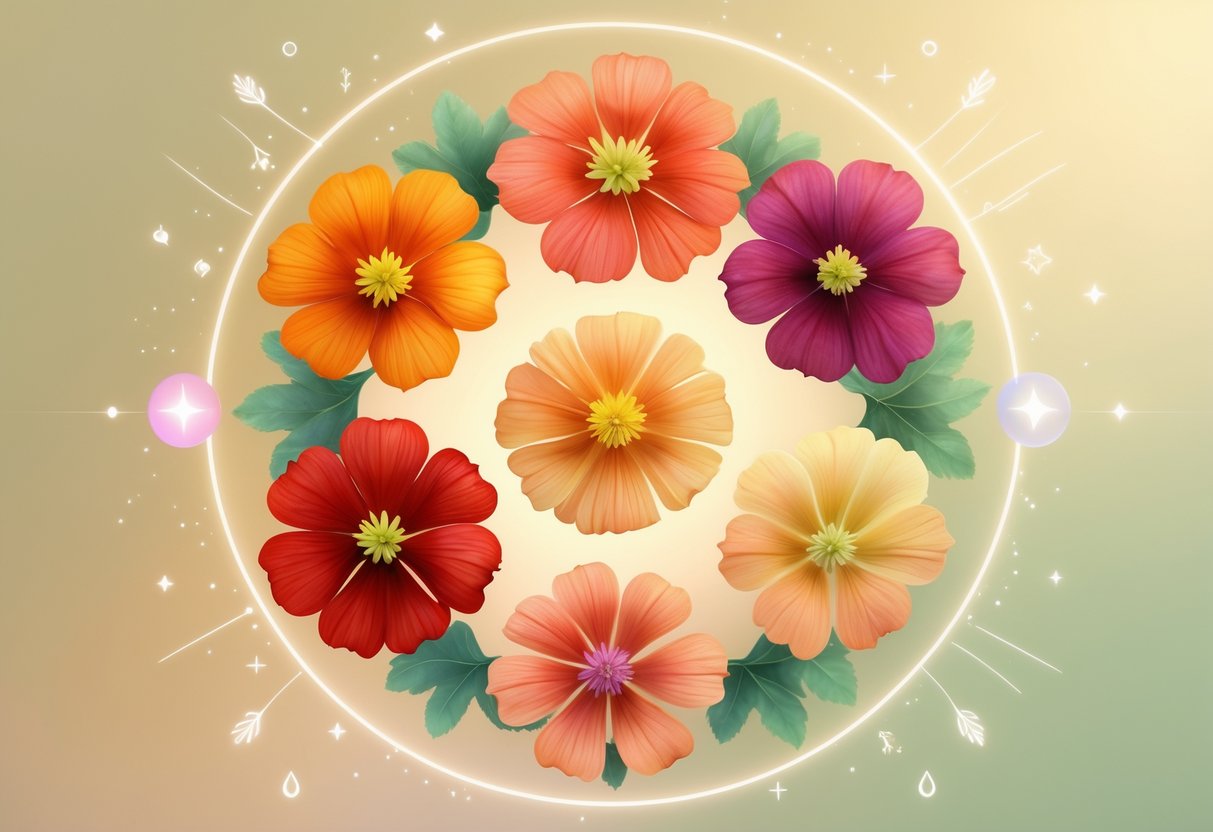
Nasturtium flowers carry deep spiritual meanings linked to personal growth and emotional strength. They symbolize qualities like courage, renewal, and positivity. Their bright colors and robust nature reflect various powerful messages that can inspire and guide those who connect with them.
Resilience and Strength
Nasturtium flowers thrive in poor soil and harsh conditions, making them symbols of resilience. This ability to grow strongly despite challenges mirrors a person’s capacity to endure difficult times.
Their presence encourages persistence, reminding one to keep moving forward even when circumstances are tough.
The toughness of nasturtium flowers reflects inner strength and the determination needed to overcome obstacles.
Creativity and Innovation
The vibrant, varied colors of nasturtium flowers represent creativity and originality. They inspire new ideas and the freedom to express oneself in unique ways.
Nasturtium’s bold appearance encourages breaking free from routine and exploring fresh perspectives. This flower embodies the energy to take risks and find innovative solutions in life or work.
Its lively colors spark enthusiasm for art, projects, or personal expression, fueling natural creativity.
Joy, Optimism, and Positivity
Nasturtiums are often linked to joy and optimism due to their bright yellow, orange, and red hues. These colors are known to lift mood and inspire positive thinking.
The flowers serve as a reminder to focus on happiness and approach life with enthusiasm. Their cheerful look promotes social connection and friendliness.
Nasturtiums help encourage a hopeful attitude, even during tough times, by symbolizing the light that follows darkness.
Protection and Warding Off Negativity
Traditionally, nasturtium flowers have been used in rituals to protect against negativity. Their strong scent and bold colors are believed to clear away bad energy and create a safe space.
People plant them around their homes or include them in ceremonies to encourage spiritual cleansing and defense from harm.
This symbolism encourages vigilance and the creation of boundaries that protect physical and emotional well-being.
Transformation and New Beginnings
Nasturtium flowers also represent transformation and fresh starts. Their growth from tough soil into bright blooms parallels personal renewal and change.
They remind one to embrace new phases of life with courage and openness.
This symbolism is especially relevant during times of transition, encouraging patience and faith in personal growth.
Passion and Enthusiasm
The red and orange hues of some nasturtium flowers connect to passion and strong emotions. They reflect bold love, courage, and vitality.
Nasturtiums symbolize fearless expression of feelings and personal power.
They inspire confidence to pursue desires openly and with full commitment, making them a symbol of dynamic enthusiasm.
Healing and Restoration
Nasturtium flowers are valued in natural healing for their antibacterial and anti-inflammatory properties. Spiritually, they symbolize restoration and balance.
The flowers support mental clarity and emotional healing by promoting calm and renewal.
People use them in herbal remedies or place them in their environment to encourage recovery and strengthen the immune system.
Color Meanings in Nasturtium Spiritual Symbolism
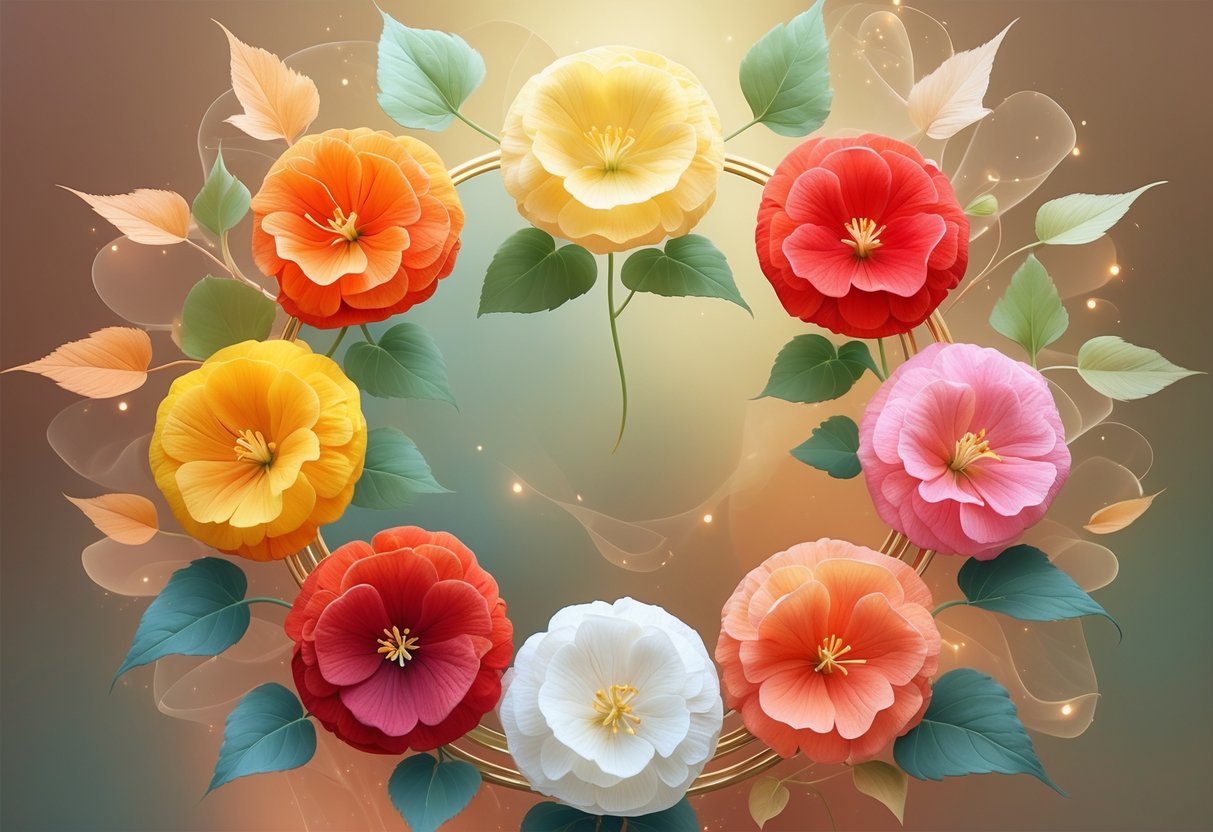
Nasturtium flowers come in bright colors that each carry specific spiritual messages. Their colors influence the feelings and qualities they represent, from strong emotions to calm energy. Understanding the significance of these colors helps explain why nasturtiums are valued beyond their beauty.
Red Nasturtium: Passion and Strength
Red nasturtiums symbolize passion, love, and strength. Their deep red hue connects to strong emotions like courage and determination. People see these flowers as signs of fiery energy that pushes someone to face challenges with confidence.
This color is often linked to the root chakra in spiritual practice, grounding a person and giving stability. Red nasturtiums encourage focused effort and bold action, whether in personal goals or relationships. They are a reminder that passion fuels persistence and that strength comes from embracing intense feelings honestly.
Yellow Nasturtium: Joy and Friendship
Yellow nasturtiums represent happiness, friendship, and mental clarity. Their bright yellow color evokes warmth and optimism. They often suggest a positive outlook and encourage kind, supportive connections.
This shade is connected to clear thinking and intelligence, helping a person stay focused and hopeful. Yellow nasturtiums can deepen loyalty and devotion in relationships. They serve as subtle reminders to nurture joy and maintain strong social bonds through openness and kindness.
Orange Nasturtium: Creativity and Energy
Orange nasturtiums carry meanings of creativity, enthusiasm, and renewed energy. Their vibrant color sparks a sense of adventure and motivation, making them symbols of fresh starts and imaginative thinking.
Spiritually, orange nasturtiums promote confidence and optimism. They help overcome self-doubt and invite individuals to explore new ideas. This color’s energy supports growth and active expression. Orange nasturtiums inspire a lively spirit and encourage embracing life with courage and excitement.
White Nasturtium: Purity and New Beginnings
White nasturtiums stand for purity, peace, and new beginnings. Their soft white color brings calm and clarity, making them symbols of healing and spiritual renewal.
People use white nasturtiums to create a peaceful atmosphere and encourage reflection. They often represent protection and emotional balance during times of change or recovery. This color promotes fresh starts and inner harmony, inviting quiet strength and thoughtful growth.
Nasturtium Flowers in Culture and Art
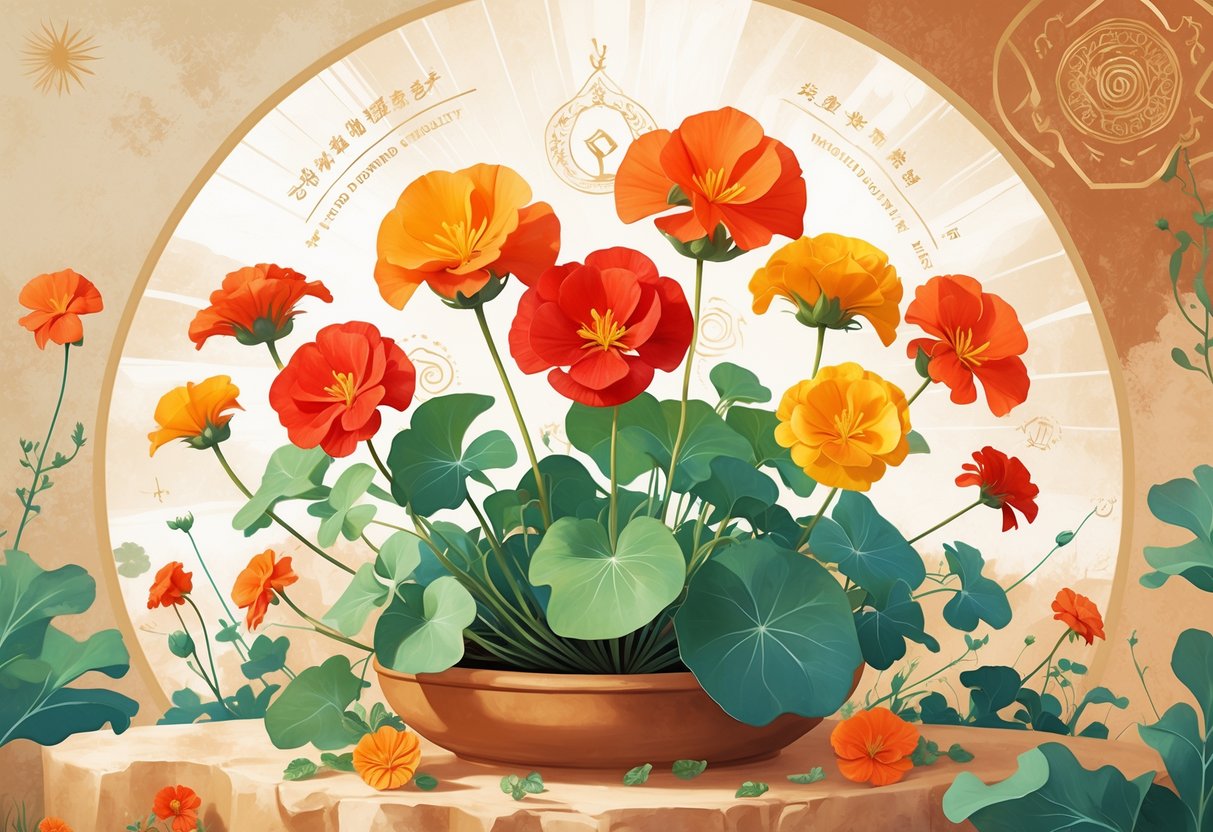
Nasturtium flowers have played an important role in cultural symbols and creative works. Their bold shapes and colors often carry meanings tied to bravery and emotion. These flowers have influenced how people express strength, beauty, and resilience through history.
Victorian and European Influences
In Victorian times, nasturtiums were linked to patriotism and valor. The flower’s shield-shaped leaves and helmet-like petals reminded people of armor. Giving nasturtiums in flower language meant honoring someone’s courage and loyalty.
Europeans often saw them as signs of conquest and victory. Their bright, warm colors symbolized strength and fiery energy. These associations made nasturtiums popular in gardens and as gifts during the 19th century.
The symbolism also reflected personal traits like endurance and boldness. Nasturtiums were admired for thriving in tough conditions, which mirrored the Victorian values of perseverance and moral courage.
Nasturtium in Artistic Expression
Artists like Claude Monet captured nasturtiums in paintings, appreciating both their beauty and symbolic power. Monet’s works reveal how nasturtiums add vibrant color and life to natural scenes, highlighting themes of growth and energy.
In poetry and literature, the flowers often represent freedom and creativity. Their playful shapes inspire self-expression and joy, encouraging a connection to nature’s raw beauty.
Visual artists use nasturtiums to symbolize resilience and inner strength. Their bright petals offer a contrast to darker themes, reinforcing ideas of hope and renewal in artistic storytelling.
Contemporary Uses and Symbolic Presence
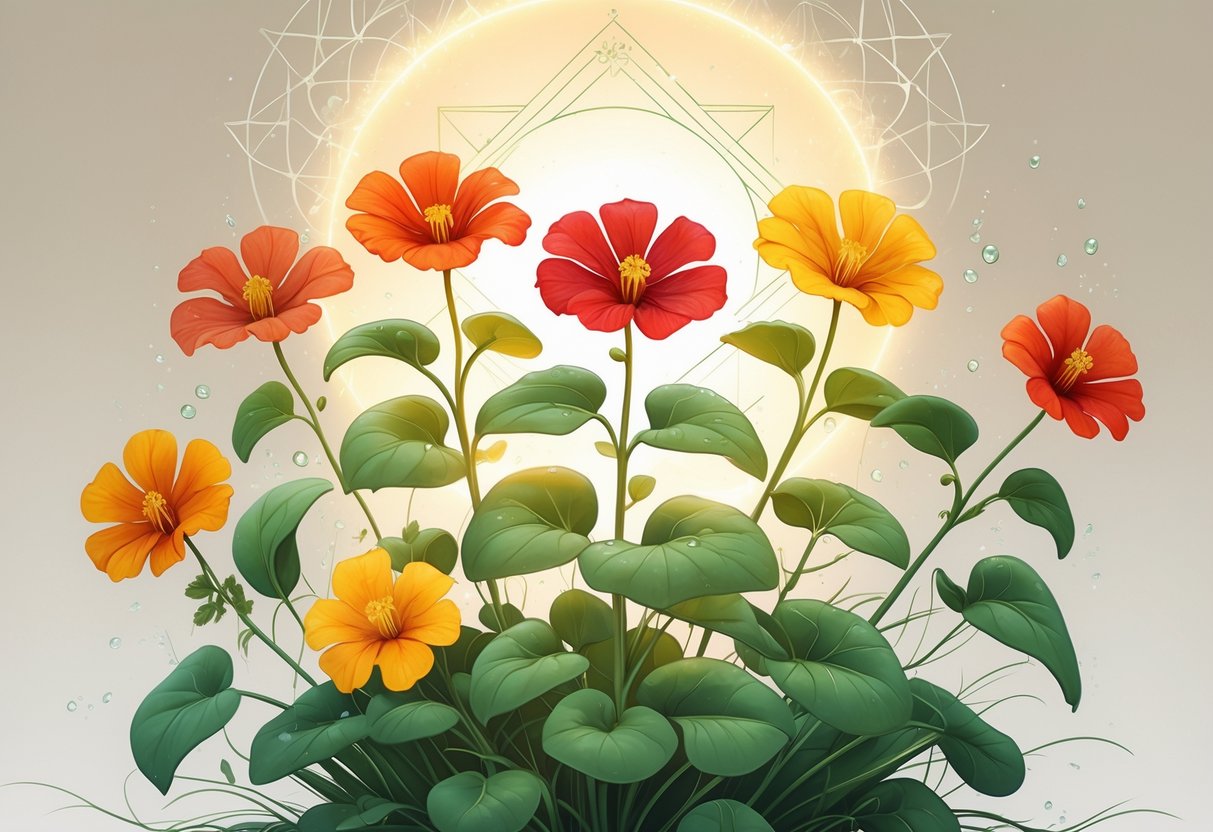
Nasturtiums hold meaning beyond their beauty. They appear in body art, serve spiritual roles in gardens, and are valued for both their flavor and health benefits. Their presence connects people to nature, creativity, and healing in everyday life.
Nasturtium Tattoo Designs and Their Meanings
Nasturtium tattoos often symbolize strength, resilience, and boldness. The flower’s bright colors and simple shape make it a popular choice for those wanting to express courage and personal growth. Red or orange nasturtiums in tattoos can represent passion and creativity.
People choose nasturtium designs to remind themselves of triumph over challenges or to celebrate their unique spirit. The peppery taste of the flower sometimes reflects a sharp, lively personality in tattoo symbolism.
Many tattoos combine nasturtiums with other elements like vines or leaves to show growth and endurance. Overall, nasturtium tattoos serve as a lasting emblem of inner power and vitality.
Spiritual Role in Modern Gardening
Nasturtiums play a key spiritual and practical role in gardens today. Their bright flowers attract pollinators like bees and butterflies, which help the garden thrive. They also draw beneficial insects such as ladybugs that protect plants by controlling pests.
Gardeners value nasturtiums for their ability to grow in poor soil, symbolizing resilience and endurance. Growing nasturtiums encourages patience and adaptability through difficult conditions.
Spiritually, many see nasturtiums as symbols of strength and courage within the natural world. Their presence in a garden can boost positive energy and inspire a connection to growth and creativity.
Culinary and Medicinal Associations
Nasturtium leaves, flowers, and seeds are edible and known for their peppery flavor. They are used to spice up salads, sandwiches, and pickled dishes. This taste reflects boldness and vibrancy, much like the flower’s symbolism.
Medicinally, nasturtiums are rich in vitamin C and have antibacterial properties. They support the immune system and have been traditionally used to treat minor wounds, respiratory issues, and urinary tract infections.
Drinking teas made from nasturtium leaves or flowers can help soothe sore throats and reduce inflammation. Their medicinal use combines physical healing with spiritual cleansing, promoting overall well-being.
Follow us on Social Media!
